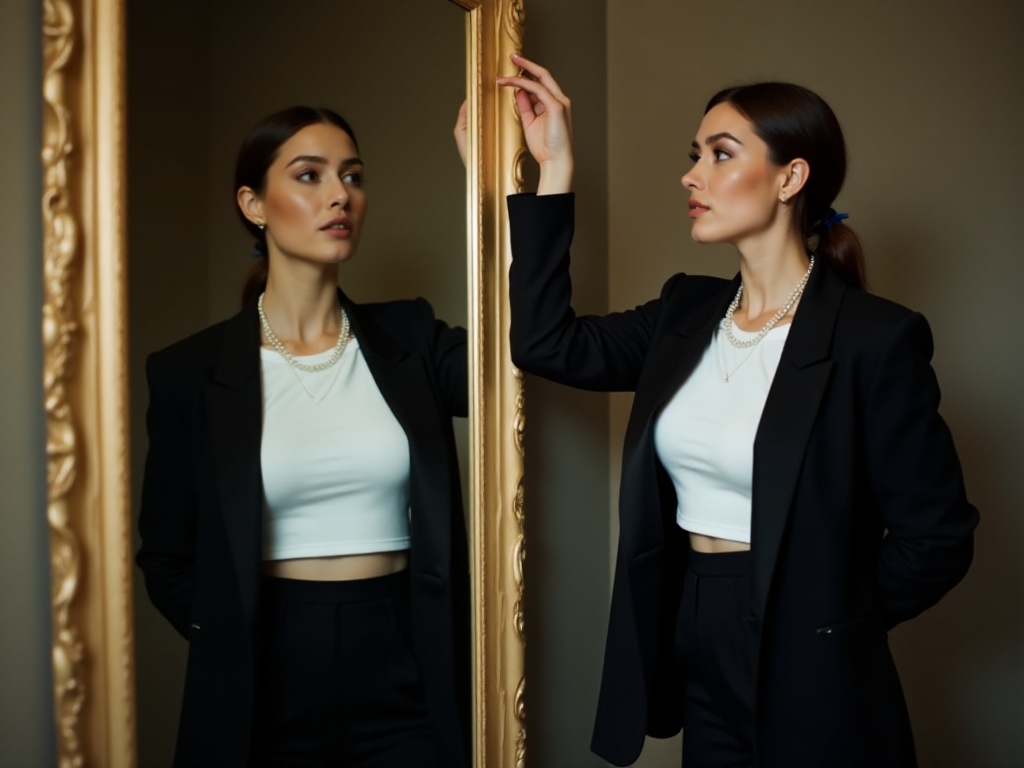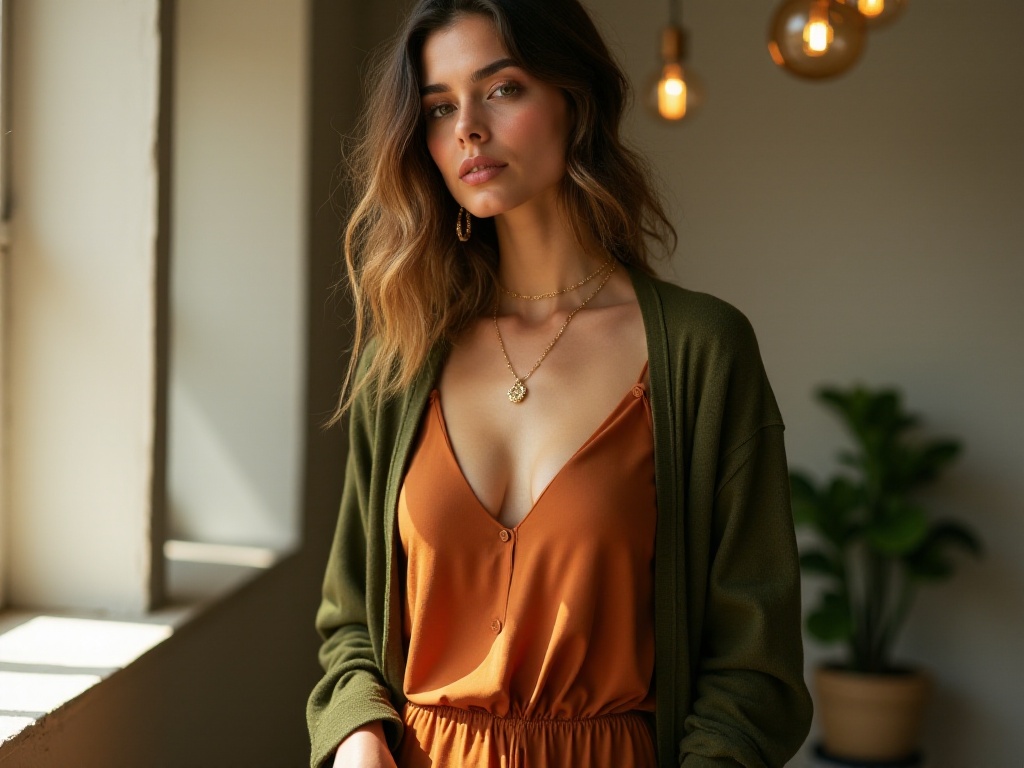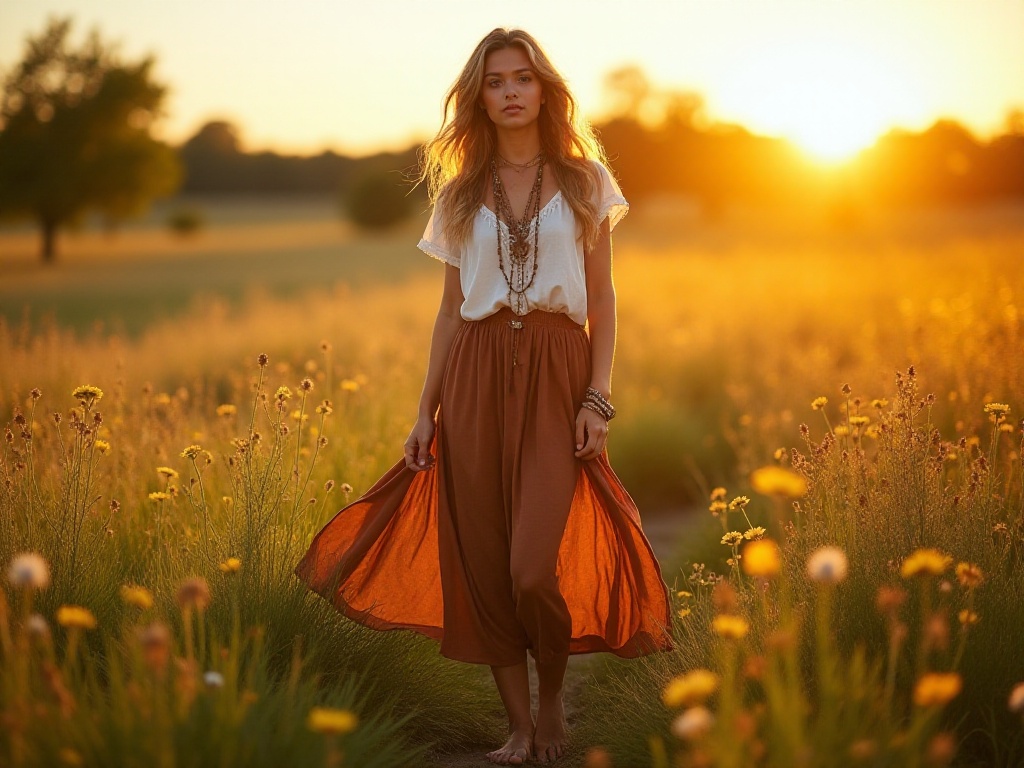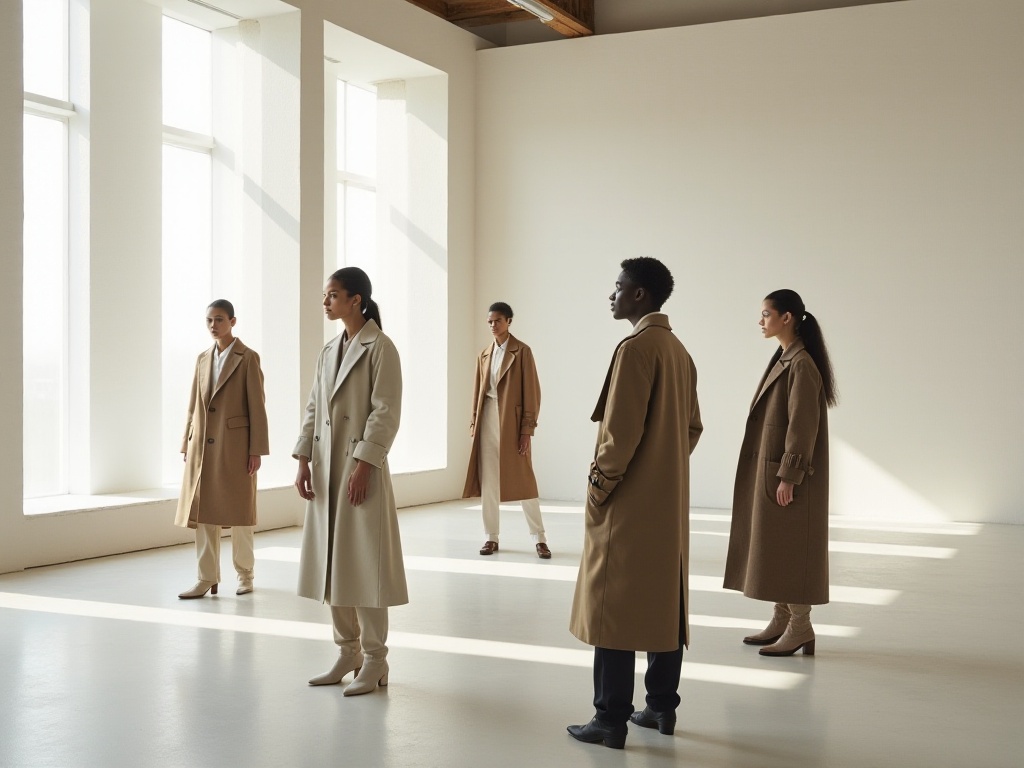Introduction
Standing in front of your closet scratching your head, staring at a full wardrobe but not knowing what to wear; going on shopping sprees and bringing home bags of clothes, only to find you don't know how to match them - this is probably a familiar scenario for many! As someone who was once clueless about fashion, I can totally relate. After years of exploration and practice, I've finally found a styling approach that works for me. Today, I'll share these experiences with you to help you build a wardrobe that's both fashionable and practical.
Understanding Yourself
To be honest, when I was still a fashion novice, I would buy whatever caught my eye without considering whether it suited me. I remember once seeing a blogger wearing beautiful khaki wide-leg pants and bought them without a second thought, but when I wore them, it was a disaster. Not only did they make my skin look dull, but because I wasn't tall enough, my whole body proportions were thrown off. This incident taught me a valuable lesson - before buying clothes, you must first understand yourself.
When it comes to understanding yourself, the most basic aspect is knowing your skin tone and body characteristics. Many people might think this is difficult to determine, but there's actually a very simple method. You can determine your skin tone by observing the color of your veins on the inside of your wrist under natural light. If your veins appear olive green or green, that indicates you have a warm skin tone; if they appear blue-purple, you have a cool skin tone. I've used this method for several years, and it's rarely been wrong.
Besides skin tone, body characteristics are also crucial factors to consider when choosing clothes. Things like height, weight, shoulder width, and leg length all affect how clothes look on you. I suggest finding a large mirror and carefully observing your body proportions to see which areas are your strengths and which need improvement through clothing choices. When I first started, I even took several full-body photos to analyze my body characteristics from different angles, which gave me a clearer direction when choosing clothes.

Color Coordination
Once you understand your skin tone, choosing suitable colors becomes much easier. For those with warm skin tones, olive green, terra cotta, and camel colors from the earth tone family are very flattering choices. These colors not only complement warm skin tones well by bringing out their healthy glow but are also very versatile. I have a warm skin tone, and I used to love wearing pure white clothes, thinking white was versatile and clean. But later I discovered that off-white or ivory were better choices for me, making me look more gentle and natural.
For friends with cool skin tones, navy blue, purple, and rose pink from the cool color family are definitely your best choices. These colors effectively highlight the translucent quality of cool skin tones, making the whole person look more refined. I have a friend with a typical cool skin tone who used to like buying warm orange and yellow clothes, but always felt something was off when wearing them. After switching to cool-toned clothes, she immediately looked much more energetic.
When it comes to color coordination, I think the most important thing is learning to use color brightness and saturation. The same blue can give completely different impressions when it's deep navy versus bright sky blue. I usually suggest choosing a main color tone and then coordinating with different brightness levels of the same color family, which ensures overall harmony while avoiding monotony.
For example, one of my favorite combinations is: a navy blue blazer paired with a light blue shirt and dark blue cropped pants - the overall look has great dimension. This kind of monochromatic coordination is particularly easy to master, even for beginners.
Another important point is not to be constrained by so-called "classic colors." While black, white, and gray are versatile, it would be too monotonous if your entire wardrobe consisted of just these three colors. I suggest trying to add some suitable bright colors as accents beyond the basic colors. Like painting, appropriate bright colors can make the whole look more lively and interesting.

Layered Styling
When it comes to enhancing outfit dimension, layering is definitely a must-master technique. Many people might think layered styling is complicated, but it's actually very easy to grasp once you understand the basic principles. Simply put, it's about creating rich visual effects through the layering of different pieces.
My most frequently used layering formula is: base layer + middle layer + outer layer. For example, a basic white T-shirt as the base layer, a beige cardigan as the middle layer, and a dark coat or blazer as the outer layer. This combination not only looks sophisticated but is also very practical. If you feel hot, you can take off the outer layer; if you're cold, you can wear all the layers.
One major advantage of layered styling is that it can create unexpected effects with simple pieces. For example, a plain white shirt might look plain when worn alone, but if you add a turtleneck sweater underneath and a vest or suit vest on top, it immediately creates a very different feel.
However, there are a few details to note when trying layered styling. First is fabric selection - different layers should have different fabric thicknesses, which is not only comfortable but also creates better visual effects. Second is length control - generally, inner layers should be shorter than outer layers for the layers to show well.
I remember when I first tried layered styling, I loved piling different length clothes on myself, but it made me look very bulky. Later I realized that layering is about moderation - it's not about having more layers, but choosing the appropriate number of layers based on your body type and occasion needs.

Occasion Transitions
Modern life moves at an increasingly fast pace, often requiring quick transitions between different occasions. For example, you might need to go to work in the morning and attend friend gatherings or business social events after work. At times like these, it becomes particularly important to know how to make the same outfit work for different occasions.
From my experience, the key to achieving quick occasion transitions is choosing versatile basic pieces. These clothes should be simple and elegant enough to allow for style changes through different combinations.
Taking my most frequently used black dress as an example, when going to work in the morning, I'll pair it with a beige cardigan and flat shoes, creating a professional yet gentle look. If I need to attend a formal event in the evening, I just need to switch the cardigan for a crisp blazer, change into high heels, add some simple jewelry, and it immediately presents a completely different feel.
Besides dresses, blazers are also an excellent choice. They can be paired with a shirt and dress pants for work to look formal; after work, switching to a T-shirt and jeans immediately makes it casual. Plus, blazers come in many styles to choose from based on your preference. For example, if you want to look sharp, you can choose a double-breasted style; if you want to look softer, choose single-breasted styles in softer fabrics.
When choosing these occasion-transitional pieces, an important principle is paying attention to details. For example, choose fabrics that don't wrinkle easily so they stay neat all day; colors should be versatile dark tones that won't look out of place in different settings.
Accessory Magic
When it comes to elevating outfit quality, accessories are definitely the most cost-effective choice. Many people might think accessories are optional, but they often have a finishing touch effect. Just like seasoning in cooking, appropriate accessories can make an overall outfit more complete.
Let's start with jewelry selection. My suggestion is to invest in some basic pieces, like simple necklaces and earrings. The advantage of these jewelry pieces is that they're versatile and timeless. I have a simple silver necklace that I wear almost daily - it goes well with different outfits.
Bag selection is also important. I think an ideal bag collection should include: a handbag for formal occasions, a tote bag for daily commuting, and a crossbody bag for casual occasions. These three different styles of bags can basically cover most occasion needs.
When choosing bags, besides style, color selection is also important. I usually suggest choosing versatile colors like black, brown, or beige. These colors are not only easy to match but also don't easily show wear.
Shoe selection is also key to elevating overall style. I think a basic shoe collection should include: a pair of formal heels, a pair of versatile flats, and a pair of comfortable sneakers. This basically covers the needs of various occasions. These shoes should preferably be classic styles so they don't go out of fashion and can be worn for a long time.
There are techniques to accessorizing. Generally, the simpler the outfit, the more statement the accessories can be; if the clothes themselves are already quite designed, then the accessories should be relatively simple. This creates harmony rather than competition for attention.

Investment Advice
When it comes to clothing investment, my advice is to prioritize. Not everyone has an unlimited budget, so you need to learn to allocate funds reasonably and use your limited budget where it matters most.
First, I suggest putting the main budget into classic pieces. For example, a well-tailored blazer or a simple genuine leather bag. While these items might require a larger initial investment, they can be worn for many years because of their classic style and guaranteed quality. Looking at it long-term, it's actually a very worthwhile investment.
I have a camel coat that I bought almost five years ago. It was quite expensive at the time, but because of the good fabric and classic style, it still looks crisp and not old at all. In comparison, I've bought many cheap coats before that lost their shape or faded after a short time, which actually ended up being more wasteful.
Second, for basic items like T-shirts and tank tops, you don't need to spend too much. Because these clothes are worn frequently and easily get sweaty, they need to be replaced more often. I usually choose brands with good value for money that ensure basic quality without breaking the bank.
For budget allocation, I think an ideal ratio is: 70% for basic pieces that form the core of your wardrobe; 20% for seasonal trendy pieces to keep the overall look fashionable; and the remaining 10% can be used to buy some unique pieces that show your personal taste.
Another particularly important point is to think clearly before buying whether a piece can match with your existing clothes. Even if it's cheap, it's wasteful if you bring it home and find it doesn't match with anything. Now before I buy clothes, I always think through whether I can create at least three different outfits with existing pieces. If I can do this, then the piece is worth investing in.

Mindset Building
After years of exploration, my biggest realization is: fashion isn't about blindly chasing brands or following trends, but finding a style that suits you. You're most beautiful when you feel comfortable and confident in what you're wearing.
I remember when I first started studying fashion, I always thought being fashionable meant buying expensive clothes and following trends. Not only did I waste a lot of money, but I often felt uncomfortable in what I wore. Later I gradually understood that true fashion is built on understanding and accepting yourself.
Actually, everyone has their own unique qualities and characteristics - the key is learning to discover and utilize these traits. For example, some people have a gentle temperament suitable for soft fabrics and warm tones; others have bold personalities and can try bold designs and bright colors. Finding a style that suits you and continuously improving in that direction is the correct way to enhance your fashion sense.
Moreover, there's no need to rush with fashion - take it slow. Looking back now, those mistakes I made were all necessary steps. It's precisely because of these experiences that I now know more clearly what suits me. So don't be afraid of making mistakes - everyone improves gradually through practice.
Finally, I want to say that while fashion changes quickly, don't let these surface appearances confuse you. True fashion transcends trends - it's about displaying personal taste and character. I hope everyone can find their own fashion path based on self-understanding.
So, what unique fashion insights would you like to share? Or what difficulties have you encountered when matching clothes? Feel free to tell me in the comments.
Related articles




